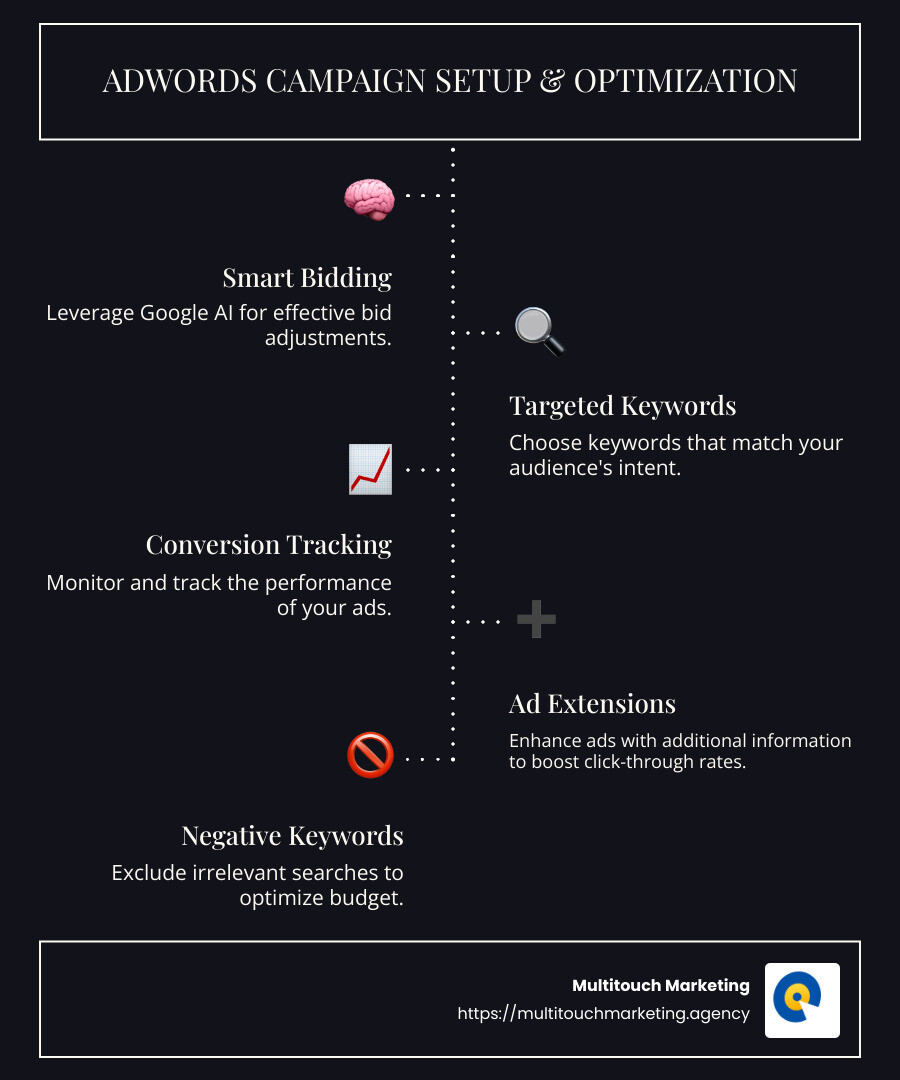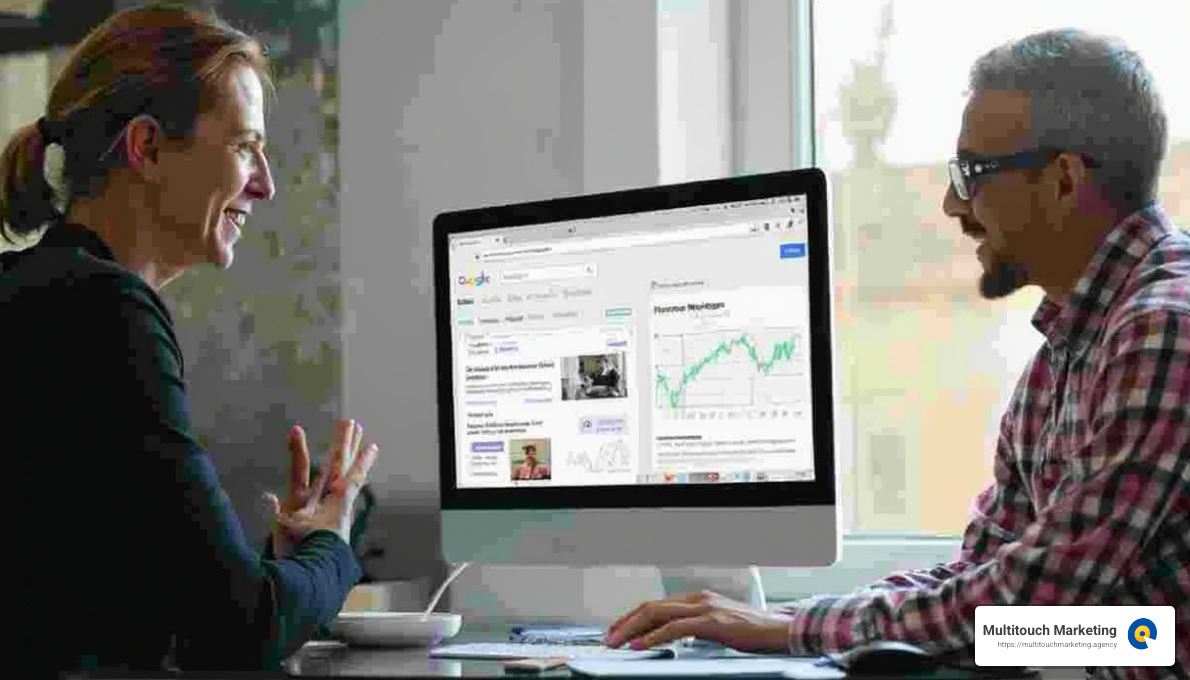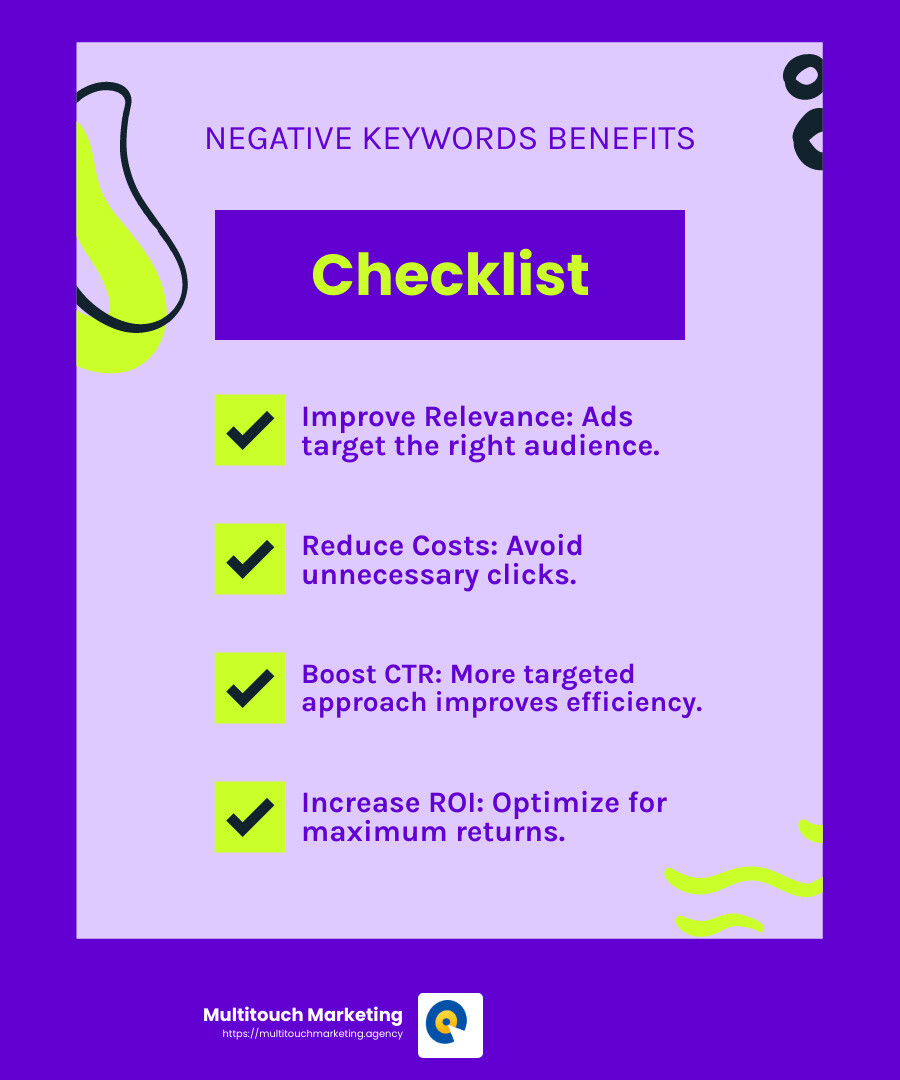AdWords Campaign Setup and Optimization: Top 5 Secrets
When it comes to digital marketing success, mastering Google Ads campaign setup and optimization (formerly known as adwords) is crucial. Whether you’re a small business owner looking to increase your online presence or someone eager to make every advertising dollar count, setting up an efficient Google Ads campaign is where it all begins. Here are a few essential elements you’ll need:
- Smart Bidding: Use Google AI for optimal bid adjustments that save time.
- Targeted Keywords: Select relevant keywords that resonate with your audience.
- Conversion Tracking: Ensure you have conversion tracking set up for monitoring performance effectively.
Pay-Per-Click (PPC) campaigns offer a strategic way to drive traffic and boost sales, placing your business in front of the right audience at the right time. Think of PPC as the digital bridge connecting your products or services to potential customers actively seeking them out. This approach isn’t just about increasing clicks; it’s about driving quality leads that translate into tangible business outcomes.
As a strategic digital marketer with a strong background in Google Ads campaign setup and optimization, I’ve helped businesses from various sectors thrive in the digital space. By leveraging AI-driven insights and advanced data strategies, my role is to ensure your marketing endeavors yield measurable success.

Basic Google Ads campaign setup and optimization vocab:
Understanding Google Ads Campaign Setup
Setting up an Google Ads campaign is like building the foundation of a house. The stronger the setup, the better your campaign will perform. Let’s break down the key components you need to focus on: campaign types, budget setting, and audience targeting.
Campaign Types
Choosing the right campaign type is your first step. Google Ads offers several options, each designed to meet specific marketing goals:
- Search Campaigns: These are text ads that appear on Google search results. Ideal for capturing demand by targeting users actively searching for your product or service.
- Display Campaigns: Visual ads shown across Google’s Display Network. Great for building brand awareness and reaching a broader audience.
- Shopping Campaigns: Perfect for e-commerce businesses, these ads showcase your products directly in search results.
- Video Campaigns: Engaging video ads that appear on YouTube and across Google’s video partners.
Selecting the right type depends on your business goals. For instance, if you’re looking to boost brand awareness, Display and Video campaigns are excellent choices.
Budget Setting
Your budget determines how often your ads appear. Setting it wisely ensures you get the most bang for your buck. Here are some tips:
- Start Small, Scale Up: Begin with a modest budget. Monitor performance and increase spending on successful campaigns.
- Daily vs. Monthly Budget: Decide whether to set a daily budget (ideal for consistent spending) or a monthly one (better for flexibility).
- Smart Bidding: Use Google’s Smart Bidding to automatically adjust bids to maximize conversions within your budget. This can save time and improve efficiency.
Your budget should align with your business goals and the value of your conversions.
Audience Targeting
Reaching the right audience is crucial. Here’s how to fine-tune your targeting:
- Demographic Targeting: Focus on specific age groups, genders, and household incomes that match your customer profile.
- Location Targeting: Ensure your ads are seen by people in locations where you do business. For example, if you’re a Raleigh, NC-based company, target that region.
- Interest and Behavior Targeting: Use Google’s data to target users based on their interests and online behavior.
- Custom Audiences: Create custom audiences based on your existing customer data or website visitors.
Effective audience targeting ensures your ads reach people most likely to convert, enhancing the overall success of your campaign.

By understanding and implementing these elements, you set the stage for a successful Google Ads campaign. Next, we’ll dig into Google Ads campaign setup and optimization strategies to further improve your campaign’s effectiveness.
Google Ads Campaign Setup and Optimization
Once your Google Ads campaign is set up, it’s time to fine-tune it for optimal performance. This involves incorporating negative keywords, long-tail keywords, and ad extensions. Let’s explore these essential components.
Negative Keywords
Negative keywords are like filters for your ads. They prevent your ads from showing up in irrelevant searches. Imagine you’re selling luxury watches. You wouldn’t want your ads appearing when someone searches for “cheap watches.” By adding “cheap” as a negative keyword, you ensure your ads reach the right audience.
Using negative keywords helps you:
- Improve Relevance: Your ads only show to users genuinely interested in your product.
- Reduce Costs: Avoid spending on clicks from users unlikely to convert.
- Boost CTR: A more targeted approach often leads to higher click-through rates.
Long-Tail Keywords
Long-tail keywords are specific phrases that usually have lower search volume but higher intent. For instance, “men’s waterproof luxury watches” is more specific than just “watches.” These keywords often lead to better conversion rates because they capture users further along in the buying process.
Benefits of using long-tail keywords include:
- Less Competition: Fewer businesses bid on these phrases, making them more affordable.
- Higher Conversion Rates: Users searching with specific terms are often ready to purchase.
- Better Quality Score: Relevant keywords can improve your ad’s Quality Score, leading to lower costs and better ad placement.
Assets (formerly known as Ad Extensions)
Assets improve your ads with additional information, making them more appealing and informative. They can include phone numbers, links to specific pages, or even customer reviews.
Types of assets to consider:
- Sitelink Extensions: Direct users to specific pages on your website, like a sale or contact page.
- Call Extensions: Add a phone number to your ad, encouraging users to call directly.
- Location Extensions: Show your business address, making it easy for local customers to find you.
Assets can significantly improve your ad’s visibility and click-through rate. Google Ads often rewards ads with extensions by giving them more prominent placements in search results.
By integrating these elements into your Google Ads campaign setup and optimization, you can ensure your ads are targeted, relevant, and effective. These strategies not only improve the performance of your ads but also maximize your return on investment.
Next, we’ll explore top strategies for optimizing your AdWords campaigns, including bidding strategies and landing page optimization.
Top Strategies for Optimizing Google Ads Campaigns
Optimizing your Google Ads campaigns is essential to get the most out of your advertising budget. Let’s dig into key strategies like bidding strategies, improving your quality score, and landing page optimization.
Bidding Strategies
Choosing the right bidding strategy is crucial for maximizing your ROI. Google Ads offers various options, but the right choice depends on your goals. Here are some popular strategies:
- Manual CPC (Cost-Per-Click): Gives you full control over your bids for each keyword. Ideal if you want to manage your budget closely.
- Maximize Conversions: Uses Google’s AI to set bids that get the most conversions. Great if you’re focused on boosting sales or leads.
- Target CPA (Cost-Per-Acquisition): Automatically sets bids to help get as many conversions as possible at your desired cost per action. This is useful if you have a specific budget per conversion in mind.
Using the right strategy can significantly affect how effectively your ad budget is spent. As one expert puts it, “Automated bidding can save time and improve performance, but have conversion tracking in place” .
Quality Score
Your ad’s Quality Score is a crucial factor in determining your ad’s position and cost. It’s based on the relevance of your ad, keywords, and landing page to the user’s search query. A higher Quality Score can lead to lower costs and better ad placement.
To improve your Quality Score:
- Relevance: Ensure your ad copy and keywords align closely with your landing page content.
- CTR (Click-Through Rate): Aim for a high CTR by writing compelling ad copy that attracts clicks.
- User Experience: Optimize your landing page to provide a seamless and relevant experience for visitors.
A well-optimized Quality Score not only lowers costs but also improves ad visibility. As noted in the research, “Matching your ad copy and landing page with search terms can improve your Quality Score” .
Landing Page Optimization
Your landing page is where potential customers decide whether to engage further or leave. A well-optimized landing page can significantly impact your conversion rates.
Key elements to focus on:
- Relevance: Ensure the landing page content matches the promise of the ad. If your ad is about “50% off luxury watches,” the landing page should prominently display this offer.
- Speed: A fast-loading page is crucial. Google considers page speed as a ranking factor, and slow pages can lead to higher bounce rates.
- Clarity: Use clear headlines and concise text. Make it easy for users to understand your offer and take action, whether it’s filling out a form or making a purchase.
By focusing on these aspects, you improve the effectiveness of your adwords campaign setup and optimization, ensuring your ads reach the right audience with the right message.
Next, we’ll explore advanced techniques for Google Ads optimization, including RLSAs and automated bidding.
Advanced Techniques for Google Ads Optimization
In the changing landscape of digital advertising, mastering advanced techniques for Google Ads campaign setup and optimization can set your campaigns apart. Let’s explore some powerful strategies: RLSAs, automated bidding, and data analysis.
Remarketing Lists for Search Ads (RLSAs)
RLSAs allow you to tailor your search ads to users who have previously interacted with your website. This feature can dramatically increase the relevance of your ads and improve conversion rates.
Why use RLSAs?
- Targeted Audience: Focus on users who are already familiar with your brand, increasing the likelihood of conversion.
- Custom Bids: Adjust bids for these users, potentially bidding higher for those more likely to convert.
- Custom Messaging: Customize ad copy to resonate with returning visitors, addressing their specific interests or needs.
Imagine an online bookstore using RLSAs to target visitors who previously browsed “Children’s Books” but didn’t purchase. When these users search again, they see ads with special promotions for children’s books, enticing them to return and buy.
Automated Bidding
Automated bidding uses Google’s AI to adjust your bids in real-time, aiming to achieve your specific goals, such as maximizing conversions or maintaining a target CPA.
Benefits of Automated Bidding:
- Efficiency: Saves time by automating the bidding process.
- Performance: Google’s AI optimizes bids based on historical data and real-time signals.
- Scalability: Easily manage large campaigns without manual adjustments.
However, it’s crucial to monitor performance. As noted, “Automated bidding can save time and improve performance, but have conversion tracking in place” .
Data Analysis
Data is the backbone of effective Google Ads campaign setup and optimization. By analyzing performance metrics, you can make informed decisions to improve your campaigns.
Key Data Analysis Strategies:
- A/B Testing: Experiment with different ad variations to determine what resonates best with your audience. Test headlines, descriptions, and even landing pages.
- Performance Monitoring: Regularly check metrics like CTR, conversion rate, and Quality Score. Use these insights to refine your campaigns.
- Pivot Tables: Use tools like pivot tables to consolidate and analyze large datasets, gaining valuable insights without manual calculations.
As Steve Dang, VP of Growth and Strategy, emphasizes, “Although advanced spreadsheet skills like pivot tables can be useful, focus on well-considered keywords, ad copy, and landing pages” .
By implementing these advanced techniques, you can lift your AdWords campaigns, reaching the right audience with precision and maximizing your advertising ROI.
Next, we’ll address some frequently asked questions about AdWords campaign setup and optimization.
Frequently Asked Questions about Google Ads Campaign Setup and Optimization
How can I optimize my Google Ads campaign?
Optimizing your Google Ads campaign is all about refining your strategy to achieve the best results. Start by setting clear objectives. Are you aiming for more clicks, conversions, or brand awareness? Your goals will guide your optimization efforts.
Bidding is crucial. Use Smart Bidding strategies like “Maximize conversions” to let Google’s AI adjust your bids for better performance . Don’t forget to monitor your conversion tracking regularly to ensure you’re on the right path.
Organize your campaign into ad groups. Each ad group should focus on a specific theme or product. This helps you create more relevant ads and improves your Quality Score, a key metric that affects your ad’s visibility and cost .
How to set up a successful Google AdWords campaign?
A successful campaign starts with precise audience targeting. Identify where your potential customers are and tailor your ads to those locations. If you run an e-commerce store, target all the areas you ship to, not just your business location (source).
Responsive ads are a must. They automatically adjust their size, appearance, and format to fit various ad spaces. This ensures your ads reach more people and can adapt to different devices.
Maintain a high Quality Score by ensuring your ad copy matches the keywords and the landing page. This score influences your ad rank and cost-per-click. Keep testing different ad variations to see what works best.
How often should you optimize your Google Ads?
There’s no one-size-fits-all answer, but several factors can guide you. Your budget size plays a role; larger budgets can yield faster data, allowing for more frequent optimizations. If you’re dealing with high competition, regular updates are necessary to stay ahead.
Your campaign’s goals should also dictate optimization frequency. If you’re not meeting your objectives, it’s time to tweak your strategy. Generally, a full account review once a month is recommended, with smaller adjustments weekly or even daily (source).
By keeping these factors in mind, you can ensure your campaigns are always performing at their best, maximizing your return on investment.
Need Help with Google Ads?
Navigating the complex world of Google Ads campaign setup and optimization doesn’t have to be overwhelming. At Multitouch Marketing, we’re dedicated to making this journey smooth and successful for your business. Our expertise in PPC campaigns allows us to provide custom solutions that align with your goals.
With our help, you can expect clear guidance on setting up your campaigns, from choosing the right keywords to crafting compelling ads. We focus on maximizing your return on investment by employing smart bidding strategies and regularly optimizing your campaigns based on data-driven insights.
Our team understands the ever-changing landscape of digital marketing. That’s why we stay on top of the latest trends and tools, ensuring your campaigns remain competitive and effective. Whether you’re new to PPC or looking to improve existing efforts, our expert guidance can make all the difference.
Ready to lift your digital marketing? Contact us today to learn more about how we can help you achieve your advertising goals. Let’s turn your vision into reality with strategic and optimized Google Ads campaigns.


